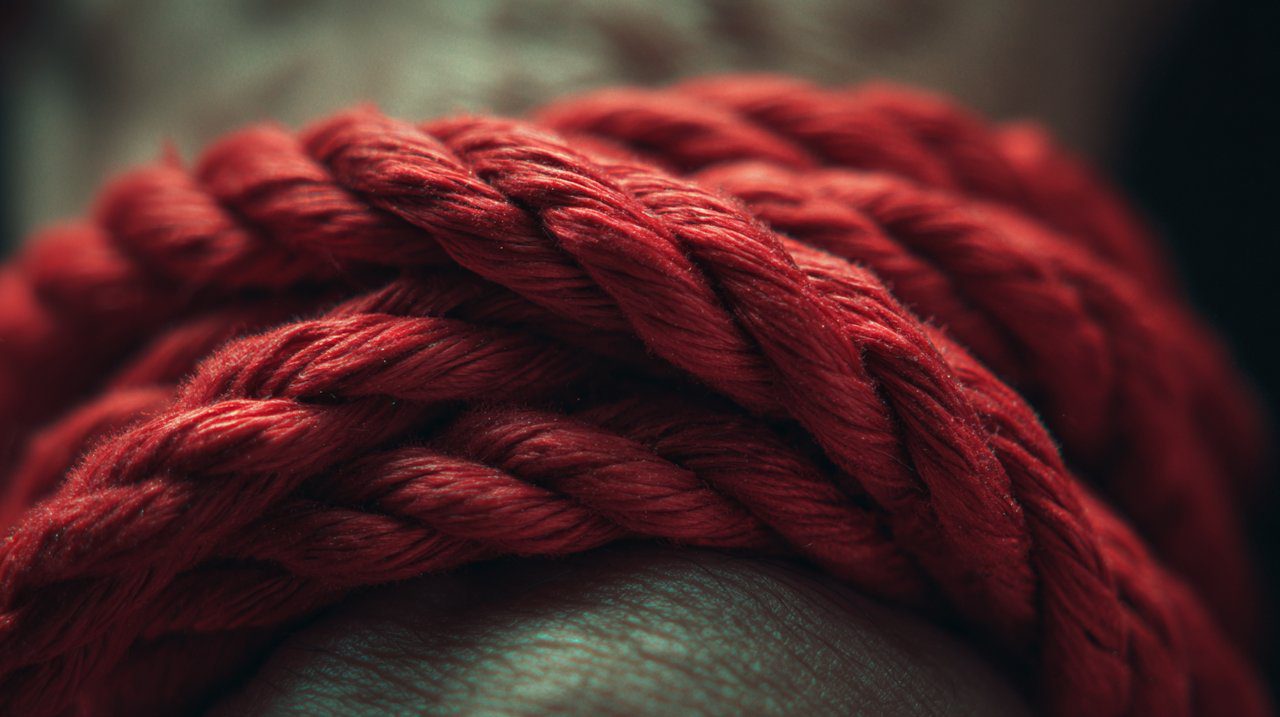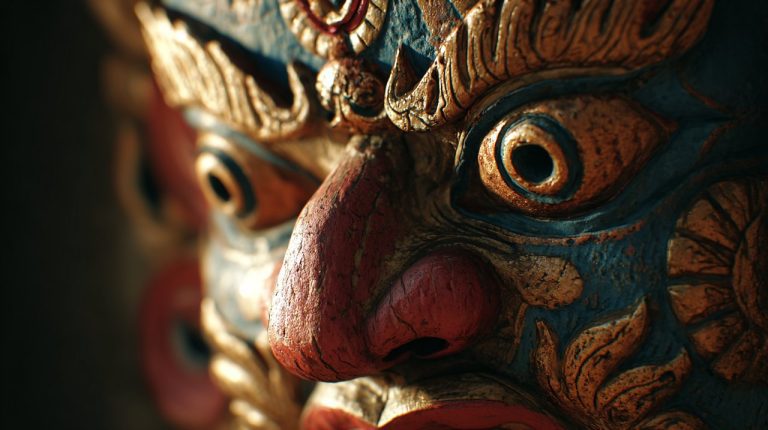Red Bondage Rope: Meaning, Benefits, and How to Incorporate It into Your Practice
Have you ever paused to consider how certain objects, in their very essence, can hold layers of meaning beyond what first meets the eye? Take the red rope, for instance. More than just a tool, it has quietly woven itself into the fabric of passionate connection and profound trust for centuries, across various practices.
For many, the thought of exploring this vibrant element in their intimate life sparks both curiosity and perhaps a touch of apprehension. You might find yourself wondering about its true significance, how to approach it safely, or what truly distinguishes it from any other cord.

Understanding the Essence of Red Rope
As we gently pull back the veil on the world of the red rope, one of the first threads we encounter is its very substance—the material itself. Each fiber whispers a different story, offering unique sensations and handling characteristics that profoundly shape both the comfort and the control within a shared experience.
Material and Construction: A Tactile Exploration
Let’s explore the tactile world of rope materials, each offering a distinct dialogue with the skin.
- Soft Cotton Ropes: Often serve as a gentle initiation. Soft and forgiving, they offer a reassuring grip and tie with ease, making them a comforting choice for those just beginning their journey.
- Textured Jute: For a touch more texture and a firmer embrace, jute lends its rustic aesthetic and excellent friction. This natural fiber often requires a little preparation, like carefully burning off loose strands, to ensure a truly smooth connection.
- Smooth Nylon and Silk: These materials offer incredibly smooth sensations. They glide with a luxurious, almost slippery touch, strong yet presenting a unique challenge for those new to the art due to their slickness.
Beyond the fiber, the very construction of the rope—whether braided or twisted—also shapes its character and how beautifully it holds a knot. Twisted ropes often feel more traditional and offer a solid grip, while braided ropes can offer a smoother, more uniform caress.
The Significance of Red: A Deeper Hue
Beyond its physical properties, the color red itself carries immense symbolic weight across cultures and within the context of intimate practices. It’s rarely just a random choice, but rather a deliberate invocation of profound meaning.
Red is universally associated with passion, love, energy, and intensity. In the realm of rope work, it can symbolize:
- Desire and Drive: A vibrant visual cue for heightened emotions, igniting the senses.
- Power and Dominance: Visually asserting presence and the dynamic interplay of control.
- Vulnerability and Surrender: The striking contrast against skin can deeply emphasize the act of being bound, highlighting the profound trust involved.
Choosing a red rope can amplify the emotional landscape of your practice, making intentions and feelings more visually explicit and deeply felt. It’s a way to set a specific tone for your shared experience, drawing upon rich cultural symbolism that resonates across various traditions and forms of personal adornment, such as the enduring emblem of heritage and protection found in a jade bracelet Jade bracelet chinese meaning: An Enduring Emblem of Heritage and Protection.
Symbolism and Emotional Connection: The Dance of Trust
At its heart, using a red rope is less about physical restraint and more about a profound dance of trust and communication. It transforms a simple object into a powerful conduit for connection.
Trust and Communication: Unspoken Dialogues
The act of being tied, or tying another, demands an immense amount of faith. It requires both partners to be intensely present and attuned to each other’s needs. This shared vulnerability becomes a fertile ground for non-verbal communication.
A gentle tightening, a slight shift in posture, or even the subtle rhythm of breath can convey messages that words might miss. It invites a deeper level of understanding between you, laying a foundation for stronger, more harmonious relationships in all aspects of life, much like thoughtful design can enhance connection in a shared space Feng Shui Bedroom Design for Stronger Relationships.
'True intimacy begins when both individuals feel safe enough to be vulnerable.'
Power Dynamics and Consent: A Shared Exploration
Within any interaction involving a red rope, understanding and honoring power dynamics are crucial, all framed within the bedrock of enthusiastic consent. This isn’t about coercion; it’s about shared exploration and the conscious choice to engage.
The roles of a ‘rigger’ (the one tying) and a ‘ropee’ (the one being tied) are fluid and negotiated, a beautiful dance of give and take. The rope itself becomes a tangible representation of this agreement. Every session is an opportunity to explore:
- Voluntary Surrender: The profound power to willingly give up control, trusting another.
- Responsible Dominance: The gentle yet firm power to guide and protect, always with care.
Open, continuous communication, including the vital use of safe words, ensures that boundaries are respected and that the experience remains positive and empowering for everyone involved. It is, in essence, a powerful act of agency and mutual respect.
Safe Practices and Beginner Guidance: Crafting a Secure Space
Safety is paramount when working with any rope, especially a red rope that signifies intensity. Our goal is always to create a space of secure exploration, not risk or discomfort.
Safety First: Essential Guidelines for Connection
Before any tying begins, it’s vital to discuss boundaries, comfort levels, and establish clear safe words. This foundational conversation sets the tone for a respectful experience. During the tying process, always:
- Protect Sensitive Areas: Avoid tying directly over joints, nerves, or blood vessels. Padding can be your best friend, offering a cushion of care.
- Monitor Circulation: Ensure the rope isn’t too tight. A good rule of thumb is the ‘two-finger rule’ – you should be able to comfortably slide two fingers under the rope.
- Have Quick-Release Mechanisms: Learn simple quick-release knots, or keep a pair of safety scissors close by for any unforeseen emergencies.
Remember, the focus is on sensation and connection, not on causing harm or discomfort. Regularly check in with your partner, both verbally and non-verbally, to ensure their comfort and well-being.
Choosing Your First Red Rope: A Gentle Beginning
Selecting the best red rope for beginners doesn’t have to be complicated. The right choice can significantly enhance your initial experiences, making them more comfortable and confidence-building. For your first foray, consider these factors:
- Material: Soft cotton or hemp are highly recommended. They are gentle on the skin, offer good grip, and are easy to manipulate for learning basic knots.
- Length: A good starting length is typically 25-30 feet (7-9 meters). This allows for basic ties without being overly cumbersome.
- Diameter: Around 6-8mm is ideal. Thinner ropes can dig in uncomfortably, while thicker ones can be harder to knot for beginners.
You can find quality ropes from specialized BDSM or rope art suppliers who prioritize safety and material quality. It’s wise to avoid hardware store ropes, as they may be treated with chemicals or lack the necessary softness for intimate use.
Basic Tying Techniques for Beginners: The First Knots
Once you have your red rope, you might be eager to start. We can begin with some foundational techniques that prioritize safety and ease of learning, guiding you on how to tie red rope safely. Start with simple, non-constricting ties, focusing initially on single column ties around wrists or ankles.
- Lark's Head Knot: A secure and easy-to-learn knot that forms a foundation for many ties. Practice this until it feels natural and fluid in your hands.
- Friction Knots: These allow for adjustable tension without needing to tie overly complex knots, giving you flexibility and control.
Practice these techniques on yourself first, or on a pillow, to truly get a feel for the rope’s tension and how knots behave. Patience is key; mastery comes with gentle repetition and deep understanding. Focus on creating beautiful lines and shapes, rather than just restraint. The aesthetic aspect, the visual poetry of the rope, can be just as rewarding as the physical sensation.
Red Rope in Shibari Art: A Living Sculpture
For centuries, the Japanese art of Shibari has elevated rope tying from a mere function to a profound aesthetic and expressive form. The red rope for Shibari art becomes a painter’s brush, creating living sculpture and telling stories without words.
Aesthetic and Expressive Qualities: Weaving Visual Narratives
In Shibari, the rope is not just a tool for restraint; it’s an extension of the artist’s vision and the model’s form. The striking red color can:
- Accentuate Lines: Drawing the eye along the contours of the body, highlighting its natural grace.
- Create Visual Drama: Highlighting the tension and grace of the pose, adding a layer of intensity.
- Evoke Emotion: The vibrant hue can heighten the sense of passion, vulnerability, or power within the artwork, speaking directly to the soul.
Think of the intricate patterns of a karada (body harness) or the delicate suspension of a kinbaku (full body suspension). The red rope transforms the body into a canvas, inviting contemplation and admiration, a silent dialogue between form and feeling.
Beyond Function: Art and Connection, a Meditative Practice
Shibari with red rope transcends simple physical binding; it becomes a deeply meditative and connective practice. It’s where the boundaries between art, intimacy, and self-discovery beautifully blur.
For both the rigger and the ropee, a Shibari session can be a journey of profound connection. It involves intense focus, presence, and a shared intention to create something beautiful and meaningful. The rope facilitates a dialogue of trust, surrender, and shared vulnerability, leading to a unique bond that extends far beyond the physical act.
'Shibari is a dance between two souls, where the rope becomes the choreography.'
This practice invites us to explore our limits, express our inner worlds, and find beauty in the intricate connections we forge, fostering a sense of personal harmony and protection that extends beyond the physical realm Kwan Yin Pendant: Activating Personal Harmony and Protection.
We’ve explored the rich tapestry surrounding the red rope, from its practical materials and powerful symbolism to the essential guidelines for safe practice and its elevated role in Shibari art. Remember, this vibrant tool is about enhancing connection, building trust, and exploring intimacy with intention and care.
As you consider your next steps with red rope, whether you’re a curious beginner or looking to deepen your practice, focusing on quality, safety, and open communication will always serve you best. Perhaps you’re now wondering where to find the best red rope for beginners or seeking specialized workshops to refine your tying skills—the journey of discovery truly never ends.
💡 Frequently Asked Questions
The color red in bondage rope is universally associated with passion, love, energy, and intensity. It can symbolize desire, power, dominance, vulnerability, and surrender, amplifying the emotional landscape of the practice.
Common materials include cotton, jute, nylon, and silk. Soft cotton ropes are highly recommended for beginners because they are gentle on the skin, offer good grip, and are easy to manipulate for learning basic knots.
Essential safety guidelines include discussing boundaries and safe words, avoiding tying directly over sensitive areas like joints or blood vessels, monitoring circulation (using the 'two-finger rule'), and having quick-release mechanisms or safety scissors readily available.
In Shibari, red bondage rope is used beyond mere restraint as a profound aesthetic and expressive art form. It accentuates lines, creates visual drama, and evokes emotion, transforming the body into a canvas and facilitating a deeply meditative and connective practice.








